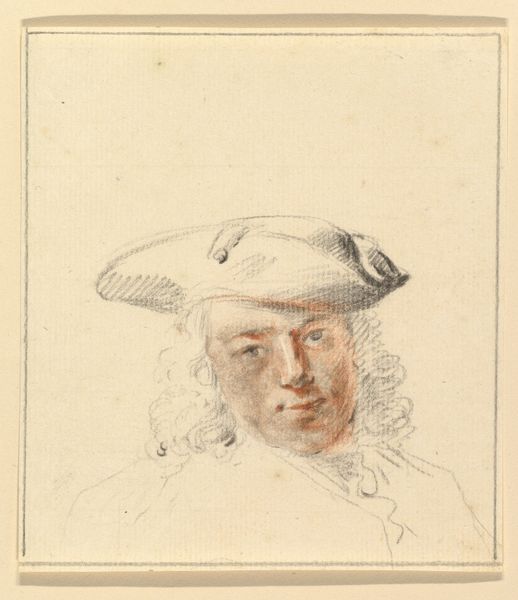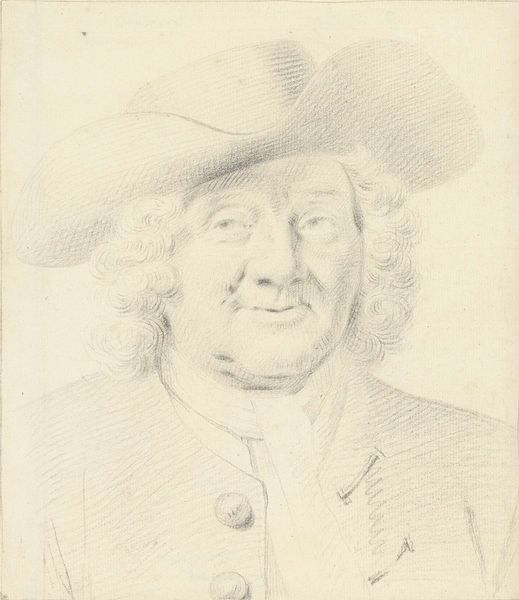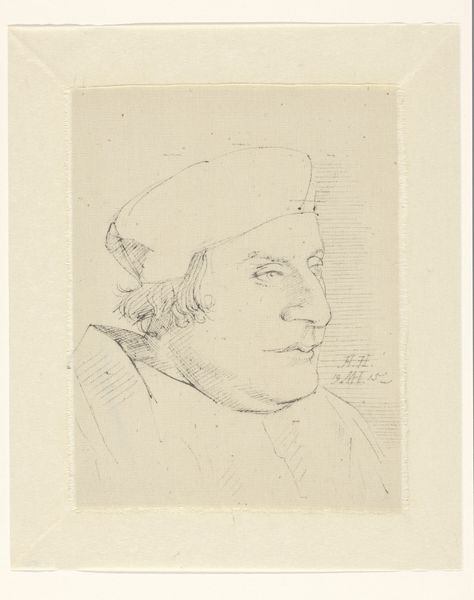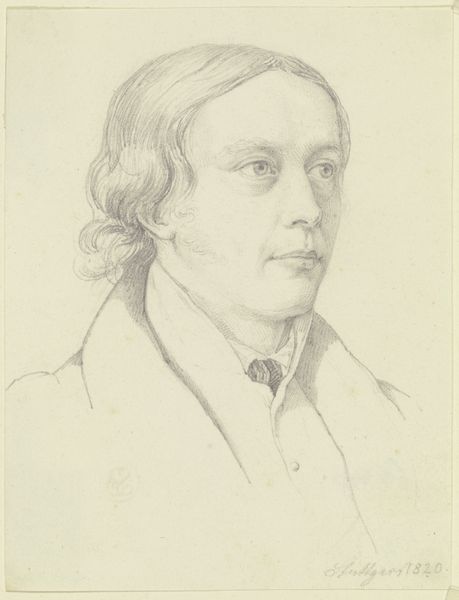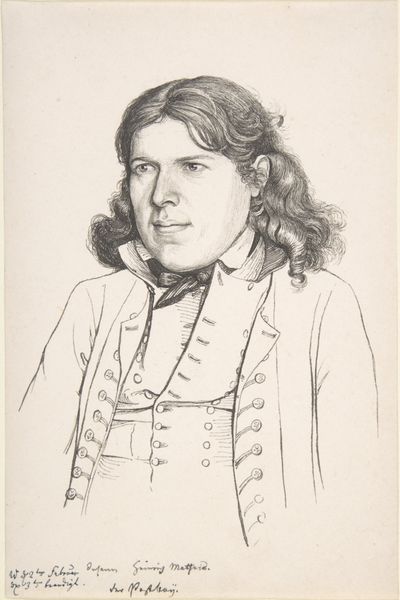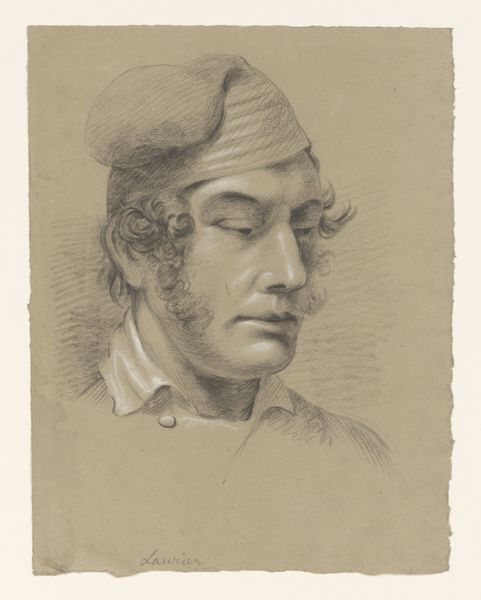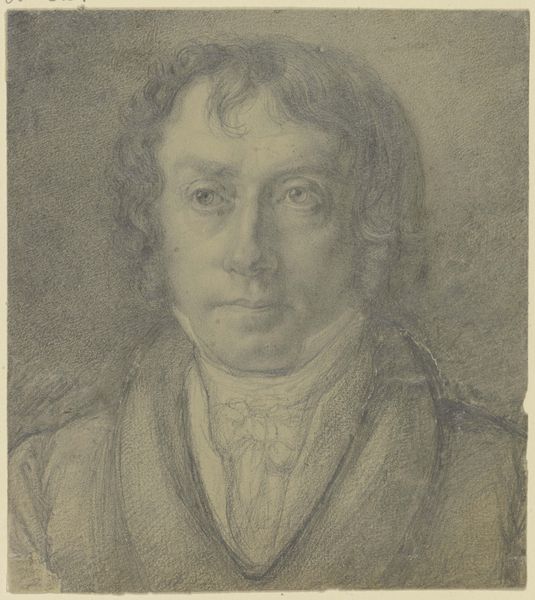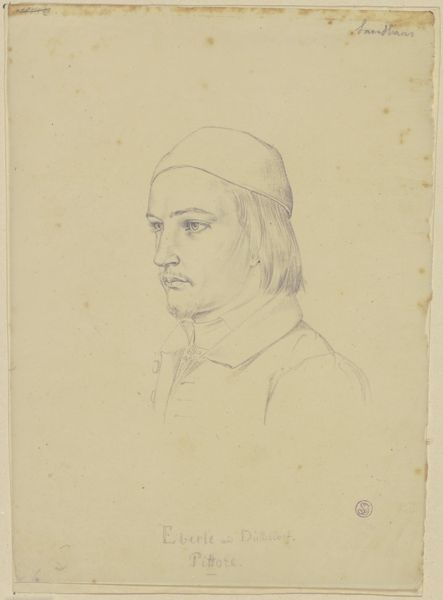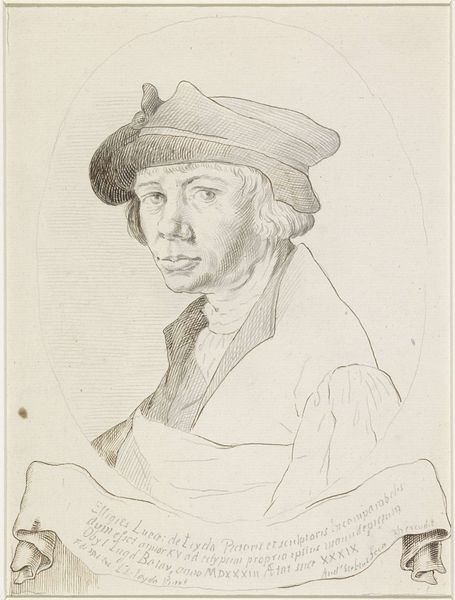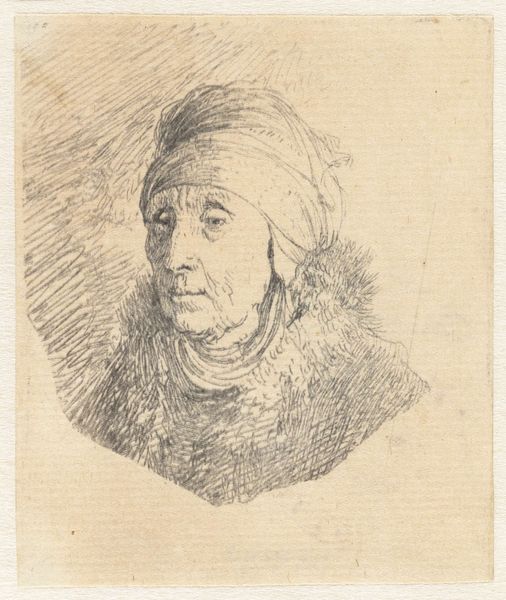
Copyright: Public Domain
Curator: Christian Ernst Stölzel's "Selbstbildnis des Künstlers," or "Self-Portrait of the Artist," created around 1822, captures the artist's likeness in delicate pencil strokes. Editor: It's an unassuming piece, but immediately strikes me with its tender mood, this fragile yet determined face emerging from a simple pencil drawing. Curator: Precisely. It's currently held in the Städel Museum. Consider how self-portraits function within an artist's career, almost as declarations of identity amidst societal expectations and artistic movements. Editor: Yes, and Stölzel’s medium is important here, the accessible pencil – almost democratizing portraiture. It’s a clear indication that these drawings existed in an economy, likely a smaller, more intimate production compared to oils. This wasn’t meant for grand halls. Curator: That's an astute observation. The relative affordability and accessibility of pencil and paper compared to oils broadened the field for portraiture during this period. This reflects a burgeoning middle class who sought representation but may not have been able to afford painted portraits. Editor: Absolutely. And consider the hand. This is Stölzel's hand making Stölzel. There's no intermediary, only paper, pencil, and the self. Curator: We should also keep in mind the era. During the early 19th century, the idea of the individual artist gained momentum, fueled by Romanticism. Editor: It definitely speaks to that era. He portrays himself in an everyday hat with soft light highlighting the softness of his Romanticism curls and mustache. It almost feels raw, honest. Curator: The gaze really anchors us. I believe this sketch is essential for understanding how artists presented themselves, both to their contemporaries and to posterity. Editor: And it all goes back to process. Looking at the paper itself reveals subtle craftsmanship – how the support shapes and receives the image and gives context to even simple means and materials. Curator: It seems to me that "Selbstbildnis des Künstlers" reveals as much about artistic production and its consumption as it does about Stölzel’s internal world. Editor: Agreed. By examining both the portrait and the process, we gained insight into artistic practice during the early 19th century, as well as social and economic climates.
Comments
No comments
Be the first to comment and join the conversation on the ultimate creative platform.

